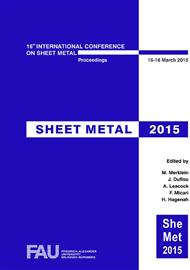p.13
p.21
p.33
p.41
p.49
p.57
p.65
p.71
p.77
Formability of AA6060 Tubes in Hot Metal Gas Forming at High Temperatures
Abstract:
The continuous need of improved performances in automotive in terms of dynamic behaviour, fuel consumption and safety of passengers, have raised the interest for lightweight alloys as well as for the optimization of the design of the structural components of the car chassis. With this twofold aim, many researches are focused in the evaluation of new car designs, materials, and processes to manufacture even more complex components with increased stiffness-to-weight ratio. From that standpoint, the use of shaped hollow parts in the car body in white appears one of the most promising solutions, due to the elevated stiffness of tubular structures and the reduced weight. However, hydroforming processes that have been traditionally used to shape such components have shown several limitations with lightweight alloys, suffering their reduced formability, the temperature limitations of the forming liquids as well as long process time and complex machines. In this paper the recently introduced technology of Hot Metal Gas Forming (HMGF) has been considered, in order to investigate the influence of the process parameters on the formability of AA6060 tubes. The semi-finished tubes were produced through direct hot extrusion, with different temperatures and feed rates process, and tested by HMGF at elevated temperatures. The properties of the final products are investigated through analyses of the microstructure, micro hardness and thickness measurements.
Info:
Periodical:
Pages:
49-56
Citation:
Online since:
March 2015
Authors:
Keywords:
Price:
Сopyright:
© 2015 Trans Tech Publications Ltd. All Rights Reserved
Share:
Citation:


